QUOTE:
"No man is complete without a feeling for music
and an understanding of what it can do for him."
and an understanding of what it can do for him."
AUTHOR: Zoltan Kodaly

MEANING OF THE QUOTE:
"Complete fulfillment in life is not possible
unless you have some music appreciation."
unless you have some music appreciation."
COMPOSER:
FREDERIC CHOPIN

PIANO CONCERTO NO. 2,
OP. 2 IN F-MINOR
OP. 2 IN F-MINOR

PIANO CONCERTO NO. 2,
OP. 2 IN F-MINOR
1st Movement: Maestoso
Artur Rubinstein, Piano
Andre Previn, Conductor
London Symphony Orchestra

PIANO CONCERTO NO. 2,
OP. 2 IN F-MINOR
2nd Movement: Larghetto
Artur Rubinstein, Piano
Andre Previn, Conductor
London Symphony Orchestra

PIANO CONCERTO NO. 2,
OP. 2 IN F-MINOR
3rd Movement: Allegro Vivace
Artur Rubinstein, Piano
Andre Previn, Conductor
London Symphony Orchestra


COMPARE DIFFERENT
PERFORMANCES

PIANO CONCERTO NO. 2,
OP. 2 IN F-MINOR
3rd Movement: Allegro Vivace
Alfred Cortot, Piano
John Barbirolli, Conductor (1935)

PIANO CONCERTO NO. 2,
OP. 2 IN F-MINOR
OP. 2 IN F-MINOR
3rd Movement: Allegro Vivace
Evgeny Kissin, Piano
Myung-Whun Chung, Conductor
Orchestre Philharmonique de Radio France
https://www.youtube.com/watch?v=R1CZUY9Qowc


SEE THE 2ND MOVEMENT
PERFORMED IN
A BALLET FORMAT


PIANO CONCERTO NO. 2,
OP. 2 IN F-MINOR
2nd Movement: Larghetto
From Ballet 'La Dame aux Camelias'
Performed by the Paris Opera Ballet
Orchestra of The Opera national de Paris
OP. 2 IN F-MINOR
2nd Movement: Larghetto
From Ballet 'La Dame aux Camelias'
Performed by the Paris Opera Ballet
Orchestra of The Opera national de Paris


CONCERTO DEFINITION
The instrumental concerto is a music
composition (often a symphonic-type work)
in most cases, features a solo instrument
(in special cases more than one) with an
orchestra ensemble accompaniment (or
piano accompaniment) where the soloist is
ascribed a leading role showing off his/her
virtuosic skill while the accompaniment (of
some sort) forms a background to it.
 |
| Chopin's Parents: Justyna and Nicolas |
Frederic Chopin, the son of a French
father and Polish mother, was born and
grew up in Poland but after the collapse
of the Polish revolution against Russia in
1831, he went into exile to France settling
in Paris which at that time was then
a center for Polish emigres.


The Polish-Russian War of 1830-1831 was
essentially an armed rebellion of a
politically partitioned Poland against the
Russian Empire. Although the Polish
resistance was able to achieve some minor
victories, the Imperial Russian Army quickly
crushed the uprising. With Poland an
integral part of Russia, Warsaw became
"little more than a military garrison" meaning
the immediate closure of the university and
the Warsaw Conservatory where Chopin
had, merely months before, just completed
a musical course of study with Józef Elsner
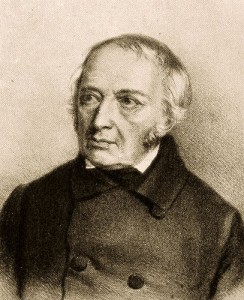 |
| Józef Elsner |
graduating from the conservatory showing
"exceptional talent and musical genius."
Even though he started his composition
work at the age of 12 with Elsner, director
of the Warsaw Conservatory, in 1822, his
pianistic talent had been recognized even
earlier; just before his eighth birthday he
had appeared in public playing a concerto
of Gyrowetza and had already begun
composing little piano pieces. When Elsner
took him on as a student it was his hope
that the gifted Chopin would one day com-
pose the great Polish national opera. How-
ever, he soon realized that Chopin needed
to find his own unique voice as a pianist
and composer and not wanting to impose
his own influence over that need, he gave
Chopin the freedom to explore his interest
in Polish folk music and expanding musical
forms like the polonaise and mazurka as
well as the nocturne and waltz.


By the time Chopin was 19, in 1829,
| Chopin in 1829 |
he began to expand his musical horizons
by traveling outside his native Poland. In
August of that year he made his Viennese
debut impressing audiences with his
brilliant piano playing and his novelty
as a Polish nationalistic composer.
Chopin debut in Vienna,
July 31, 1829
|
The summer of 1829 found the 19 year old
Chopin returning to Poland. Exhaused
from his Viennese trip he stopped along the
way at Prince Radziwill's estate at Antonin,
 |
| Duke Antoni Radziwiłł’s Estate in Antonin, Greater Poland |
While resting there, he sketched out the
F-Minor Concerto (his first attempt at
composing in a large form) before
returning to Warsaw where he con-
centrated on finishing it early in 1830.
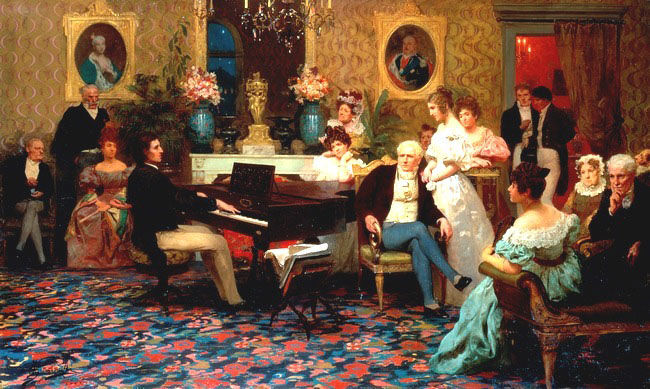 |
| Henryk Siemiradzki: Chopin Plays for the Radziwiłłs in 1829, 1887 |
As was often the case with composers
in the Romantic Era (and still is today),
the inspiration for the Concerto came to
Chopin as the result of an requited love;
the object of his affection being a soprano
voice student at the Warsaw Conservatory.


For whatever reason, Chopin chose not
to reveal his feelings to the young woman
for a long time. Instead, he poured his
heart out to his dearest friend,
Tytus Woyciechowski,
 |
|
(1808–1879)
|
in a letter dated October 3, 1829,
confessing that his Adagio from the
F-Minor Concerto had been inspired
by tender feelings for one
Konstancja Gladkowska,
 |
|
(1810-1889)
|
"whom I dream of."
Chopin, swooning like a love-struck
adolescent, also stated
"I have, perhaps to my misfortune, already
found my ideal, which I worship faithfully
and sincerely. Six months have elapsed,
and I have not yet exchanged a syllable
with her of whom I dream every night.
Whilst my thoughts were with her I
composed the Adagio of my [F-Minor]
concerto, and this morning she inspired
the waltz [Op. 70, No. 3] which I
send along with this letter."


Konstancja met Chopin on April, 21, 1829,
during a concert of the soloists of the
Warsaw conservatory, where she was
studying voice with Carlo Soliva. Her
chance encounter with Chopin, a fellow
student, left no impression on her even
though Chopin was absolutely smitten.
When Chopin left Warsaw, not long after
this concerto was completed, he and
Konstancja exchanged friendship rings.
Considering their relationship simply a
fond friendship, she married someone
else the following year. Not until decades
later, long after Chopin's death, by reading
it in his biography, did she findout about
the deep feelings he had felt for her.


Though this Concert was inspired by Chopin's
feelings for Konstancja Gładkowska, when it
was published, six years later after he had
long forgotten about her, it had a dedication
to his pupil, Countess Delphine Potocka,
a long time friend and gifted singer.
 |
|
(1805-1877)
|
In 1830, Delphine met Chopin in Dresden
and in 1832 she settled in Paris where she
became his student. Their close relationship
often fueled gossip regarding their alleged
love affair however in the mid 20th Century,
love letters to support this claim were
deemed false. Yet, it was she,
"one of the most admired types of society queens,"
in Franz Lizst's opinion, who
was with him when he died.


Chopin, now a young graduate of the
Warsaw Conservatory, was seeking to
establish himself in the musical world. He
was talented, ambitious, and in love. All
three of these qualities found reflection in
his Piano Concerto in F Minor, Op. 21.
Although know as his Second Piano
Concerto, this work pre-dates, by about
half a year, Chopin's Concerto in E Minor,
Op. 11, which now bears the designation
"Piano Concerto No. 1."


The two concertos were published in
reverse order of their composition
resulting in a misleading impression
of their chronology. It was published
second because during his extended
journey moving from Warsaw to Paris
in 1830-31, the orchestral parts were
lost and had to be written out again.
Chopin, finding this task very tedious,
completed doing this after his actual
second concerto, the E Minor Concerto,
was already in print (published in 1833
in Paris and Leipzig). Despite being
performed in 1830 the F-Minor Concerto
was not published until 1836.


Before the first public performance for
the debut of his concerto he had two
semi-private rehearsal performances in
the Chopin family's drawing room:
the first in February, among family and
 |
| Chopin Family Drawing Room |
close friends; the second on March
3rd in the presence of the musical elite
 |
|
Piano Teacher of Chopin
|
On that occasion the orchestra part was
performed by a small chamber ensemble
conducted by Karol Kurpinski
 |
| Conductor: Karol Kurpinski |
and the solo piano part was played, of course,
by Chopin. Just two weeks later those
performances were repeated in public

ANNOUNCEMENT OF THE CONCERT
"The universal wish
of music lovers
is to be granted:
Mr. Szope (Chopin),
so rightfully adored,
whose talent is compared by
connoisseurs with
the foremost virtuosos,
is shortly to give a piano concert
at the National Theatre,
performing works
of his own composition."

of music lovers
is to be granted:
Mr. Szope (Chopin),
so rightfully adored,
whose talent is compared by
connoisseurs with
the foremost virtuosos,
is shortly to give a piano concert
at the National Theatre,
performing works
of his own composition."

on the grand stage of the
National Theatre in Warsaw
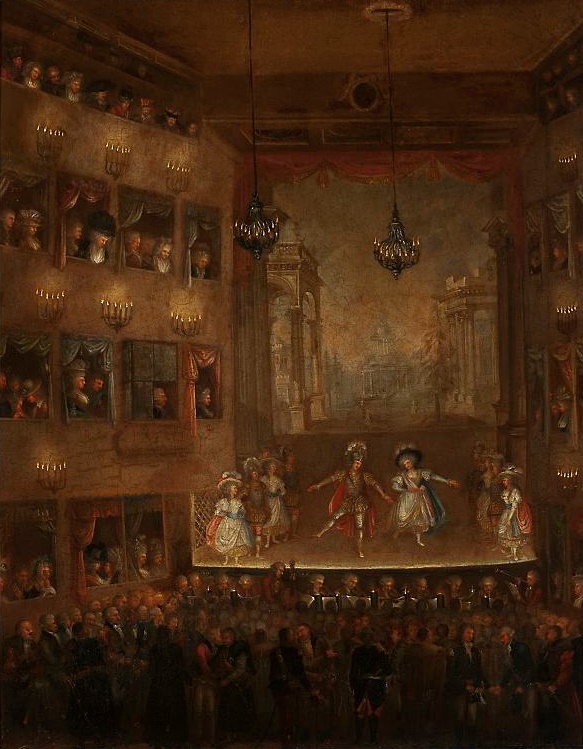 |
| The Interior of the First National Theatre |
 |
|
K. F. Dietrich: Plac Krasińskich, First Half of 19th C.
(This building is now occupied by the Warsaw Rising Monument)
|
for its premiere concert on March 17, 1830.
That occasion proved a critical success for
the young composer, then barely 20 years
old, acclaiming him as a Polish national hero
with one writer (in reference to the great
virtuoso Italian violinist) dubbing Chopin
"the [Niccolò] Paganini of the piano."
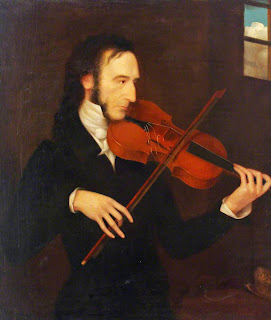 |
| Niccolò Paganini |
Another contemporary account recorded:
"How beautifully he plays. What fluency!
What evenness! Impossible that there
should exist a more perfect concord
between two hands. He plays with such
certainty, so cleanly that his Concerto
might be compared to the life of a just man:
no ambiguity, nothing false. His music is full
of expressive feeling and song, and puts
the listener into a state of subtle rapture,
bringing back to his memory all the
happy moments that he has had."
After the premiere Chopin reflected:
"The first Allegro of my concerto, un-
intelligible to most, received the award
of a single 'Bravo' but I believe this was
given because the public wished to show
that it understands and knows how to
appreciate serious music. There are
people enough in all countries who like
to assume the air of connoisseurs!"


"The Adagio (Larghetto) produced a very
great effect, after this, the applause and
'Bravos' really came from the heart."


Both of Chopin's completed piano
concertos emerged from a one-year
burst of musical ingenuity from 1829-
30. Some early biographers report
(as witnessed by numerous refer-
ences in his correspondence through-
out the 1830's that Chopin even con-
sidered composing a third concerto. It
apparently never progressed beyond
the planning stage as it is thought
that he abandoned the idea after
composing just one movement of it.


In 1841, he brought out a piece called
the Allegro de Concert, Opus 46 which
might possibly had been fashioned out
of the remnants of that abandoned third
concerto. The music was strangely
regressive and phenomenally difficult,
written in a style reminiscent of the
flamboyant Liszt. It was quite unlike his
two published concertos and not con-
sidered on of his most popular
or well known works.
Barbara Hesse-Bukowska, Piano
(1958)
https://www.youtube.com/watch?v=2UBqRDrEkTo
http://www.usc.edu/dept/polish_music/PMJ/issue/3.1.00/bonkowski_rink.html
http://www.usc.edu/dept/polish_music/PMJ/issue/3.1.00/bonkowski_rink.html

Because Chopin knew that performing
his own music was the accepted route
to stardom for young virtuosic performers,
the primary impetus in composing the
concerto was to showcase his own
pianistic abilities on a debut tour through-
out Europe. He knew that his growing
public fully expected him to follow the
path established by Mozart and
Beethoven so he tried to combine
the piano with the orchestra, not only
in creating his two piano concertos, but
also in composing the Variations Op. 2,
Fantasia Op. 13, Concert Rondo Op. 14,
and the Grand Polonaise Op. 22. Being
still uncomfortable with composing
orchestrations, after age 20, he never
again wrote for a large ensemble.


Composing for an orchestration presented
problems for Chopin as his chosen
medium was the instrument and he was
relatively inexperienced at writing for
large ensemble accompaniments. As a
result his piano parts were of a quality of
undeniable genius while music written for
the other instruments was often deemed
somewhat unbalanced in a lopsided
manner. Chopin did not seem to care as
he homed in on one aspect of composition
and intensely devoted himself to it
emphasizing the piano virtuosity and
relegating the orchestra to the background,
almost as an afterthought, rather than being
in dialogue as an equal partner with the piano.
About this Chopin wrote:
in dialogue as an equal partner with the piano.
About this Chopin wrote:
"Mozart encompasses the entire domain
of musical creation, but I've only got the
keyboard in my poor head. I know my
limitations, and I know I'd make a fool of
myself if I tried to climb too high without
having the ability to do it. They plague me
to death urging me to write symphonies
and opera, and they want me to do every-
thing in one- a Polish Rossini and a Mozart
and a Beethoven. But I just laugh under my
breath and think to myself that one must
start from small things. I am only a pianist."


The few works Chopin wrote for piano
and orchestra are often criticized for their
orchestra writing. There were some harsh
comments by the famous composer/master
orchestrator Hector Berlioz,
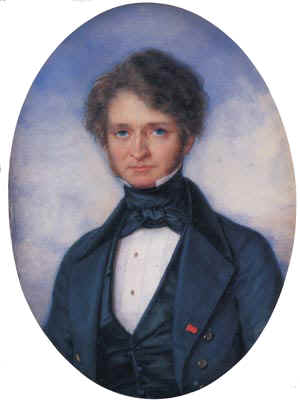 |
| Hector Berlioz |
in which he complained that when in
these concertos Chopin calls upon the
orchestra to play all at once,
"they cannot be heard, and one is tempted
to say to them: why don't you play for heaven's
sake! And when they accompany the piano,
they only interfere with it, so that the listener
wants to cry out to them: be quiet, you
bunglers, you are in the way!"
He also referred to Chopin's
treatment of the orchestra as
In a formal sense, Franz Liszt
 |
| Franz Liszt |
in 1852 suggested that,
"Chopin did violence to his genius every
time he sought to fetter it by formal rules."
By this he probably meant that the usual
larger classical treatment formats were
incompatible with his imagination and
therefore every time he tried to stick to
composing within the confines of a strict
structure his art would suffer.

Despite the criticism, Chopin's two piano
concertos were designed, un-apologetically,
as display vehicles for himself to show off
his virtuosity (just like all other traveling
piano soloists were doing during this time
period) and not composed with the
intention of renovating the standard
concerto format. This lightly orchestrated
accompaniment background, allowing the
solo line to dominate throughout, made
this concerto a functional piece for this
purpose because it gave Chopin the
freedom to perform this piece as a solo,
without any accompaniment at all,
whenever he needed to.


Within the confines of the secondary
ensemble accompaniment, Chopin does
explore some interesting orchestral tech-
niques. A noted example in the third move-
ment of this concerto being the use of col
legno; a technique where string players
strike the string with the stick of the bow
rather than using the hair side creating an
interesting percussive effect. For the day,
this was a very innovative way of
using string instruments.
 |
| Col Legno |
COL LEGNO
As his guiding influence in orchestration,
Chopin turned to several earlier con-
temporaries (composers not that well
known today) to model his style after;
composers with a concerto style very
contrary to the more equal and ad-
versarial relationship between soloist and
orchestra found, for instance, in Beethoven
Concertos. Theirs was a conception of the
concerto being a loosely organized show-
case for the performer to display their
virtuosity. It was a different tradition (a style
of piano music which became popular in
the early 19th Century) shaped by a textural
technique called "stile brillante" to which
Chopin took its virtuosity and it expanded it
to a pinnacle that it had never been before
not only in technical requirements but in his
use of personal expression. By doing this
he helped lead the way into the

Among some of the composers
whose decorated concertos were popular,
effective scores that were themselves updated,
flashy models derived from Mozart's concertos
and those by Kalkbrenner and Herz.
 |
| Friedrich Kalkbrenner (1785–1849) |
 |
Achille Devéria:
Henri Herz (1803-1888),
1832
|
He was also influenced by others; composers
of the Italian bel canto opera tradition, most
especially the great bel canto master,
(Bellini and Chopin were friends as well as
colleagues and in their compositions both men
prioritized showing off the melody over under-
stated harmonic accompaniments.)
and John Field,
 |
| John Field |
the Irish composer known for developing
the nocturne and cultivating it both as an
idea and a genre inescapably associat-
ing it forever with the piano.
ing it forever with the piano.
Philadelphia Orchestra: Eugene
Ormandy/Arthur Rubinstein

Ormandy/Arthur Rubinstein
This F-Minor Concerto is a large-scale
(approximately 30 minutes) master-
piece laid out in three movements and
follows the classical concerto traditional
structure of fast-slow-fast (to a certain
extent) with an instrumentation scored
for solo piano, 2 flutes, 2 oboes, 2
clarinets, 2 bassoons, 2 horns, 2

This work made extensive use of Polish themes
as Chopin had always been fascinated by
as Chopin had always been fascinated by
the rhythms and melodic vitality of Polish
folk music (especially the mazurka);
something extremely evident in the
concerto's finale. This concerto is challeng-
ing and demands a mastery of piano
technique and musicality from the performer.
In fact, its solo piano part is so well supplied
with highly ornamented stylistic displays that
no cadenza (cadenzas are normally found in
concertos to show off the performer's skill)
was deemed necessary to convince an
audience of the soloist's virtuosity.




MOVEMENT I
Maestoso in F-Minor
A Majestic Introduction
Maestoso
The first movement (Maestoso) is
The first movement (Maestoso) is
structured as a simple and straight-
forward double-exposition form, a
variant of the classical sonata-allegro
form dating back to the 18th Century.
It is a form typically employed in the
keyboard concertos of Mozart and
other Classical Period composers.

Chopin begins his work with an
orchestral exposition (an exposition
presents the themes) and keeping
with the convention established in
concerto allegros, the themes are
shown first in the orchestra. With an
impressive entrance made by the piano,
due in part to the sudden sparse back-
ground of the orchestra accompaniment,
the music comes to life dominating the
texture entirely while the orchestra retreats
to a supporting accompaniment role. The
solo instrument, now in full charge of the
music, changes the atmosphere by explor-
ing and commenting on the thematic ideas
just previously introduced by the ensemble
in a far more elaborate fashion; more
distinctive, poetic, and endlessly inventive.
Stated Chopin biographer Frederick Niecks:
 |
| Frederick (Friedrich) Niecks |
"Quite uncharacteristically of this sort of
composition for its time, in comparison to
the examples Chopin modeled his concertos
after, is his musical lyricism (a sort-of poetic
cantilena) which is far more warmly expressive
and poignant. This is Chopin's personality,
his distinctive style, taking over in the music."


MOVEMENT II
Larghetto
in a key relative to F Minor
(i.e. A-flat)
An Endearing Piece
Early Romantic virtuoso concertos tend
to suffer from mundane token slow
movements, but this famous Larghetto
uncharacteristically (lying at the innermost
core of the entire concerto) is a personal
heartfelt interlude conceived as an
expression of his love; a splendid tribute
with lovely, rich lyrical themes, gliding
ornamentation, magical harmonies, and
unparalleled pianistic sonorities.
Critics have called this an
"exquisite tone poem, in which extremes
of emotion are expertly juxtaposed."
The music, with its sweet, melancholy
(radiantly beautiful and serene) character,
is a nocturne for soloist and orchestra
influenced in part from the nocturnes of
John Field. Its seemingly endless fluid
lines, elaborate ornamentation, and
recitative-type passages are in the form
of a grand da capo aria showing the
influence of the contemporaneous Italian
(bel canto style) opera composer,
Vincenzo Bellini, whose music works
Chopin greatly admired after having
heard them while on trips made to
Berlin in 1828 and 1829.
 |
| Berlin |
The movement's format has a
simple ternary (A‑B‑A) outline


SECTION A:
A soulful nocturne.
SECTION B:
A more passionate middle section
played over tremolo strings
that Chopin decorates with
extraordinary freedom.
SECTION A:
The nocturne returns and
the movement closes in a
wistful, dreamy fashion.
beginning with a long and tender
theme that appears after a brief
mysterious orchestral introduction.
said that it
"sounds like the opening of a gate
to some haven of love and peace."
this next portion of the work builds to
an exquisitely languid and passionate
(romantic style) melody that could
double as an opera aria (an instrumen-
tal version of a vocal aria) for the piano
soloist. The piano melody is so rhapsodic
and embellished that it sounds almost
improvised. After all the trills and decor-
ations, Chopin gets down to the real heart
of the movement in what has become one
of the most quoted of his melodies (the
principal theme). It appears twice more
(three times all together). On each
occasion, Chopin has it played very
delicately, yet each time he impressively
arranges it in new, increasingly airy orn-
aments. The third time the phrase, ori-
ginally comprising eight notes, builds up
in the form of a wave, expressed by a
Agitated, violent sonorities then burst into
the music stating a famous dramatic pas-
sage in the middle section in which an
emotionally melodic line, led in octave
unison, appears in the piano against
Among those composers (those who were
influential to Chopin) to use a piano against
an orchestral background in a similar
in his Concerto in G Minor,

Ignaz Moscheles
PIANO CONCERTO NO. 3
IN G MINOR, Op 58
Michael Ponti, Piano
Othmar Maga, Conductor
Philharmonica Hungarica

Ignaz Moscheles
PIANO CONCERTO NO. 3
IN G MINOR, Op 58
Michael Ponti, Piano
Othmar Maga, Conductor
Philharmonica Hungarica
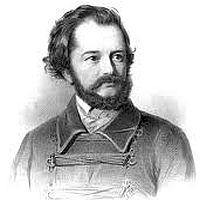 |
| Ignacy Dobrzynski |

Ignacy Dobrzyński
PIANO CONCERTO
IN A-FLAT MAJOR,
OP. 2 (1824)
Emilian Madey, Piano
Lukasz Borowicz, Conductor
Polish Radio Symphony Orchestra
The piano and orchestra carry the
music to a wrenching climax before
the opening mood returns with an
unexpected bassoon solo, imitating
This larghetto remained one of
Chopin's favorites and excited the
admiration (and praise for its
and Franz Liszt who himself des-
cribed the second movement's time-
stopping beauty, from agitation
to passion, as
"...of a perfection almost ideal, its
expression, now radiant with light,
MOVEMENT III
Allegro Vivace in F Minor
A Lively Ending
Chopin, writing this composition in the
autumn and winter of 1829, took his
time kneading its final closing third
movement into satisfactory shape.
Chopin first mentions this concerto in
a letter, written on October 3, 1829,
to his friend Titus Woyciechowski
confiding to him that his teacher Elsner
"has praised the Adagio of my concerto. He
says it is original; but I don't wish to hear any
opinions on the Rondo just yet as I am
The music is arranged in a three-part,
rondo-like form, with several sharply
contrasting themes in a mazurka-type
style. He was inspired by Polish
country folk dances: the vibrant
mazurka and its slightly slower cousin,
the kujawiak (with their playfully off-
kiltered, skewed rhythms) to which he
became directly acquainted with while
spending his vacations, between 1824-
1828, in the rural areas of Poland. The
striking of the strings with the stick of
the bow, the pizzicato and the open
fifths of the basses appear to show that
Chopin preserved the atmosphere
Chopin created much more interest in
these original folk dances by expanding
their form and composing them around
brilliantly musical stylized settings; he
changed them so wonderfully into
something of his own creation.


The traditional mazurka was in triple
time accompanied by strong accents
on the second or third beat (when
danced, the accents are reinforced by
a strong tap of the heel). It originated
as a Polish folk dance in triple meter
from the Mazovia district near Warsaw.
But the mazurka became an umbrella
name for a number of related dances:
the fiery mazurek, the lively oberek or
the slower and more sentimental
kujawiak. All three dances originated
from the older polska, a dance in which
a strong accent falls on the second or
third beat of the measure, accompanied
by a tap of the heel.

The opening key of the Rondo finale
is F-minor, a key that is slightly senti-
mental, with a tinge of reflection but
the Concerto ends by shaking itself
out of that reflection, nostalgia and
reverie, when an unexpected
conspicuous solo horn call,
marking a sudden shift from minor to
major ends the piece in the cheerful
key of F-major. This heralds in a brief
coda (marked "brillante") displaying an
array of the pianist's spectacular pyro-
technic virtuosic skills building up to a
climax after which a short fragment of
the main mazurka theme is heard again.
A final flourish by the soloist and
ending chords by the orchestra
conclude the piece.
The distinctly Polish flavor of this
movement caused Warsaw
audiences to hail this concerto
as an expression of their nationalist
hopes. One review of the work's
premiere in the Polish capital stated:
"More than once these tones seem to be
the happy echo of our native harmony.
Chopin knows what sounds are heard in
our fields and woods, he has listened to the
songs of the Polish villager, he has made it
his own and has united the tunes of his
native land in skillful composition
and elegant execution."
 |
| Albert Baumann: Chopin Concerto Numero II, 2005 |

LINKS
https://www.youtube.com/watch?v=d6inF7uFBB8
https://www.youtube.com/watch?v=DaBiz03ceSE
https://www.youtube.com/watch?v=KIIG4GN4xP
https://www.youtube.com/watch?v=m9DC-h38CGg
http://www.chopinmusic.net/works/concerti/
http://muswrite.blogspot.com/2014/08/chopin-piano-concerto-no-2-in-f-minor.html
http://www.interlude.hk/front/youthful-poetrychopin-piano-concerto-no-2-in-f-minor-op-21/
http://cso.org/uploadedfiles/1_tickets_and_events/program_notes/040810_programnotes_chopin_pianoconcerto2.pdf
http://www.sfsymphony.org/Watch-Listen-Learn/Read-Program-Notes/Program-Notes
/CHOPIN-Concerto-No-2-in-F-minor-for-Piano-and-Orch.aspx
http://www.seattlesymphony.org/symphony/buy/single/programnotes.aspx?id=10679&src=t
http://www.mso.org/plan_your_experience/program_notes/classics_4
http://tso.ca/Plan-Your-Experience/Programme-Notes/Piano-Concerto-No-2-in-F-Minor-Op-21/Print.aspx?ID=1837
http://www.santarosasymphony.com/09_10_events/event_classical_5.asp
http://webcache.googleusercontent.com/search?q=cache:LLi-YE5cNSQJ:racinesymphony.org/wp-content/uploads/2012/04/
Program-Notes-for-March-9-20141.doc+&cd=7&hl=en&ct=clnk&gl=us
http://www.sco.org.uk/content/piano-concerto-no-2-f-minor-op-21?print=1
http://en.chopin.nifc.pl/chopin/composition/detail/id/66
http://www.kcsymphony.org/ResourceCtl?fileId=AuFpgbGH%2BJN1JRYk0kWkQw%3D%3D
http://www.hhso.org/program-notes/chopin-sibelius/index.htm
http://www.ridgefieldsymphony.org/program-notes-2012-sept-22/
http://webcache.googleusercontent.com/search?q=cache:VchW0Wxs2WUJ:
www.liverpoolphil.com/download.php%253Fid%3D195+&cd=18&hl=en&ct=clnk&gl=us
http://www.boulderphil.org/BPOProgramNotes3-17-10.pdf
http://facstaff.uww.edu/allsenj/MSO/NOTES/1415/5.Feb15.html
http://webcache.googleusercontent.com/search?q=cache:zeQA4l5ENosJ:
www.houstonsymphony.org/tickets/media/upload/pdf/sub18programnotes.pdf+&cd=30&hl=en&ct=clnk&gl=us
http://www.tacomasymphony.org/client/assets/files/Classics%20III_11-12_TSO.pdf
http://www.orsymphony.org/concerts/1314/programnotes/cl13.aspx
http://www.kimmelcenter.org/events/notes/item/0809/ViennaPhil_feb09.pdf
http://magnumopus.manifo.com/frederic-chopin
http://www.carnegiehall.org/berlininlights/themusic/8160.html#top
http://www.manchestersymphonyorchestra.com/concerts/058/058-1.html
http://bazawiedzy.chopin2010.pl/
http://www.coindumusicien.com/
http://www.chopin.pl/edycja_1999_2009/galeria/gall-22.html
http://www.library.yale.edu/musiclib/exhibits/chopin/second_concerto_op21.html
http://www.usc.edu/dept/polish_music/PMJ/issue/3.1.00/bonkowski_rink.html
http://www.laphil.com/philpedia/music/piano-concerto-no-2-frederic-chopin
http://www.bbc.co.uk/orchestras/pdf/con_prog_aberdeen150313.pdf
http://en.chopin.nifc.pl/festival/edition2013/concerts/day/all
http://www.radiochopin.org/episodes/item/550-radio-chopin-episode-91-nocturne-in-f-sharp-major-op-15-no-2
http://interlude.jumpwebdev.com/front/youthful-poetrychopin-piano-concerto-no-2-in-f-minor-op-21/
http://nyphil.org/~/media/pdfs/program-notes/1415/Chopin-Piano-Concerto-No-2.pdf
https://archive.org/details/imslp-concerto-no2-op21-chopin-frdric

http://www.seattlesymphony.org/symphony/buy/single/programnotes.aspx?id=10679&src=t
http://www.mso.org/plan_your_experience/program_notes/classics_4
http://tso.ca/Plan-Your-Experience/Programme-Notes/Piano-Concerto-No-2-in-F-Minor-Op-21/Print.aspx?ID=1837
http://www.santarosasymphony.com/09_10_events/event_classical_5.asp
http://webcache.googleusercontent.com/search?q=cache:LLi-YE5cNSQJ:racinesymphony.org/wp-content/uploads/2012/04/
Program-Notes-for-March-9-20141.doc+&cd=7&hl=en&ct=clnk&gl=us
http://www.sco.org.uk/content/piano-concerto-no-2-f-minor-op-21?print=1
http://en.chopin.nifc.pl/chopin/composition/detail/id/66
http://www.kcsymphony.org/ResourceCtl?fileId=AuFpgbGH%2BJN1JRYk0kWkQw%3D%3D
http://www.hhso.org/program-notes/chopin-sibelius/index.htm
http://www.ridgefieldsymphony.org/program-notes-2012-sept-22/
http://webcache.googleusercontent.com/search?q=cache:VchW0Wxs2WUJ:
www.liverpoolphil.com/download.php%253Fid%3D195+&cd=18&hl=en&ct=clnk&gl=us
http://www.boulderphil.org/BPOProgramNotes3-17-10.pdf
http://facstaff.uww.edu/allsenj/MSO/NOTES/1415/5.Feb15.html
http://webcache.googleusercontent.com/search?q=cache:zeQA4l5ENosJ:
www.houstonsymphony.org/tickets/media/upload/pdf/sub18programnotes.pdf+&cd=30&hl=en&ct=clnk&gl=us
http://www.tacomasymphony.org/client/assets/files/Classics%20III_11-12_TSO.pdf
http://www.orsymphony.org/concerts/1314/programnotes/cl13.aspx
http://www.kimmelcenter.org/events/notes/item/0809/ViennaPhil_feb09.pdf
http://magnumopus.manifo.com/frederic-chopin
http://www.carnegiehall.org/berlininlights/themusic/8160.html#top
http://www.manchestersymphonyorchestra.com/concerts/058/058-1.html
http://bazawiedzy.chopin2010.pl/
http://www.coindumusicien.com/
http://www.chopin.pl/edycja_1999_2009/galeria/gall-22.html
http://www.library.yale.edu/musiclib/exhibits/chopin/second_concerto_op21.html
http://www.usc.edu/dept/polish_music/PMJ/issue/3.1.00/bonkowski_rink.html
http://www.laphil.com/philpedia/music/piano-concerto-no-2-frederic-chopin
http://www.bbc.co.uk/orchestras/pdf/con_prog_aberdeen150313.pdf
http://en.chopin.nifc.pl/festival/edition2013/concerts/day/all
http://www.radiochopin.org/episodes/item/550-radio-chopin-episode-91-nocturne-in-f-sharp-major-op-15-no-2
http://interlude.jumpwebdev.com/front/youthful-poetrychopin-piano-concerto-no-2-in-f-minor-op-21/
http://nyphil.org/~/media/pdfs/program-notes/1415/Chopin-Piano-Concerto-No-2.pdf
https://archive.org/details/imslp-concerto-no2-op21-chopin-frdric


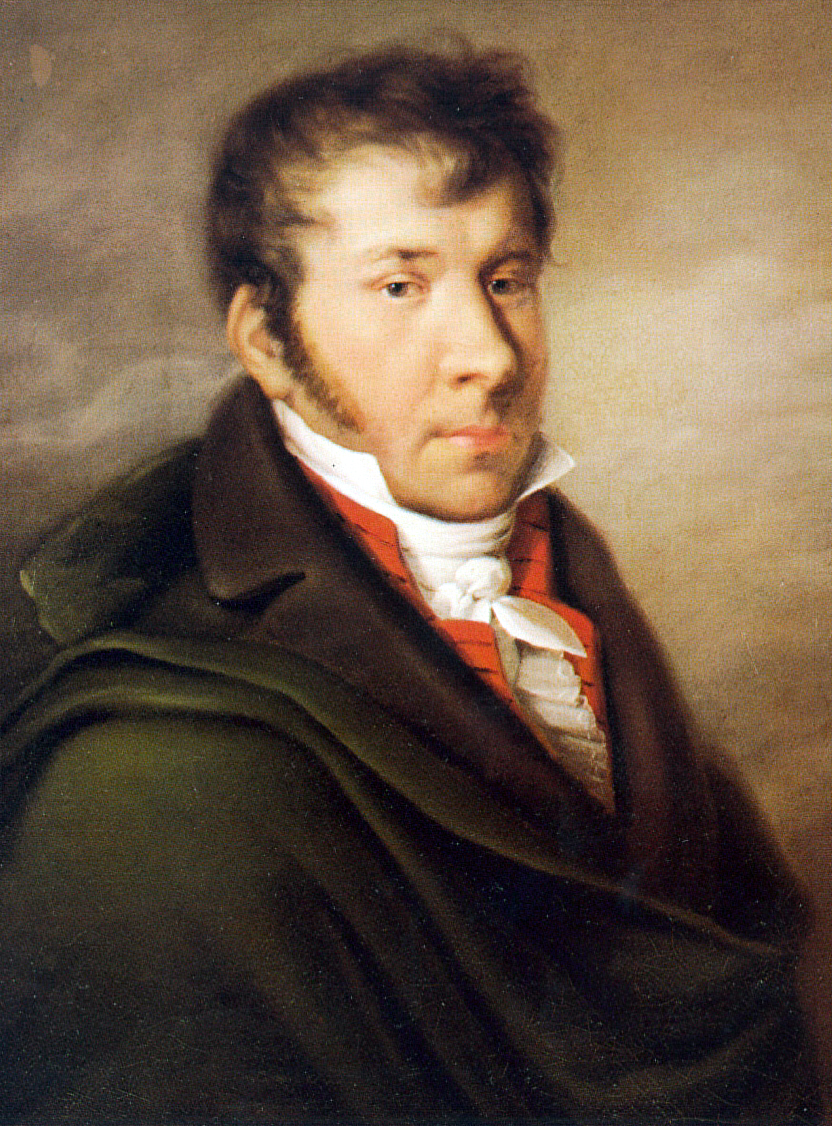
,_by_Anonymous.jpg)





